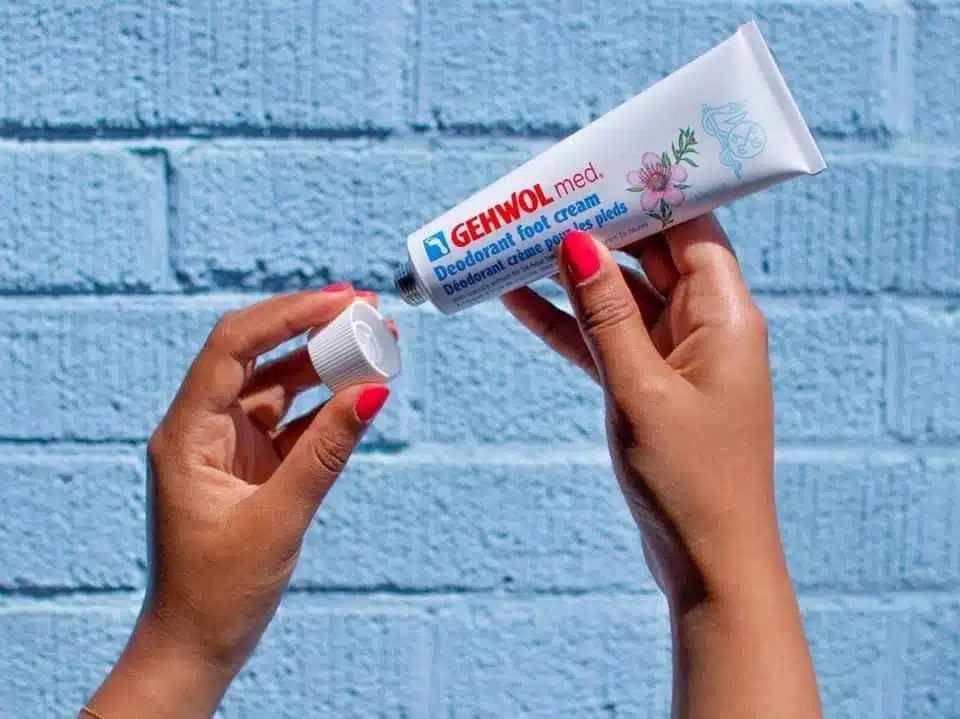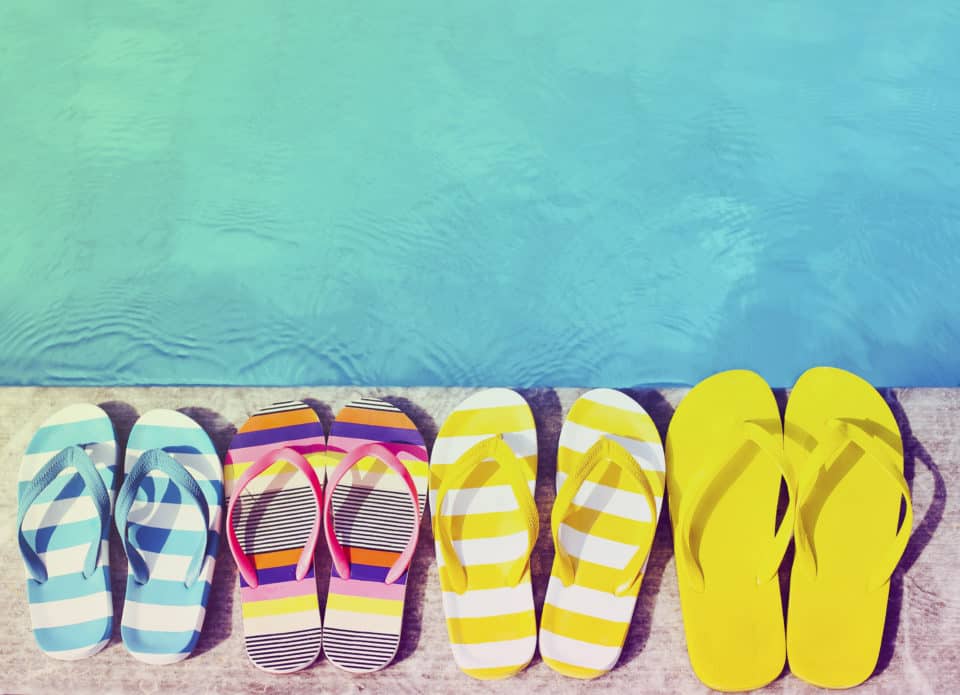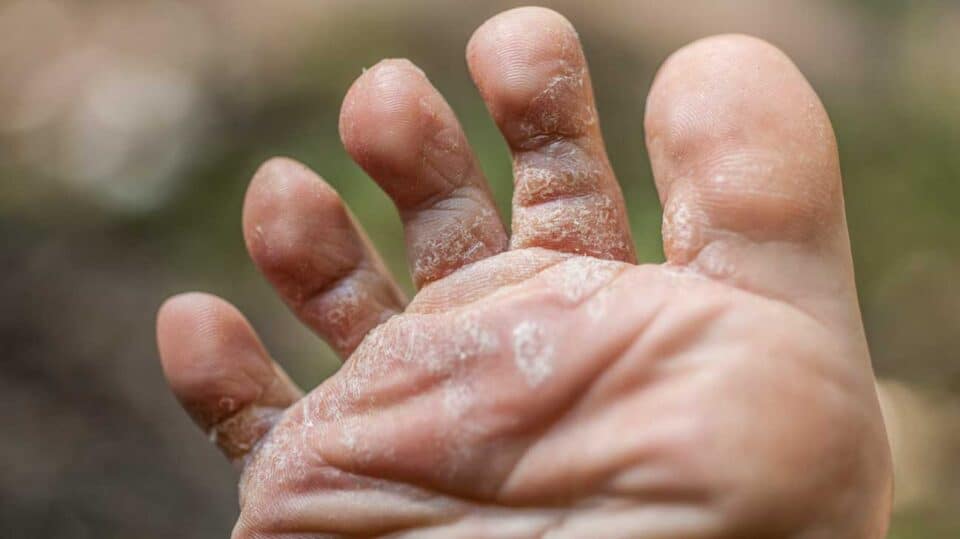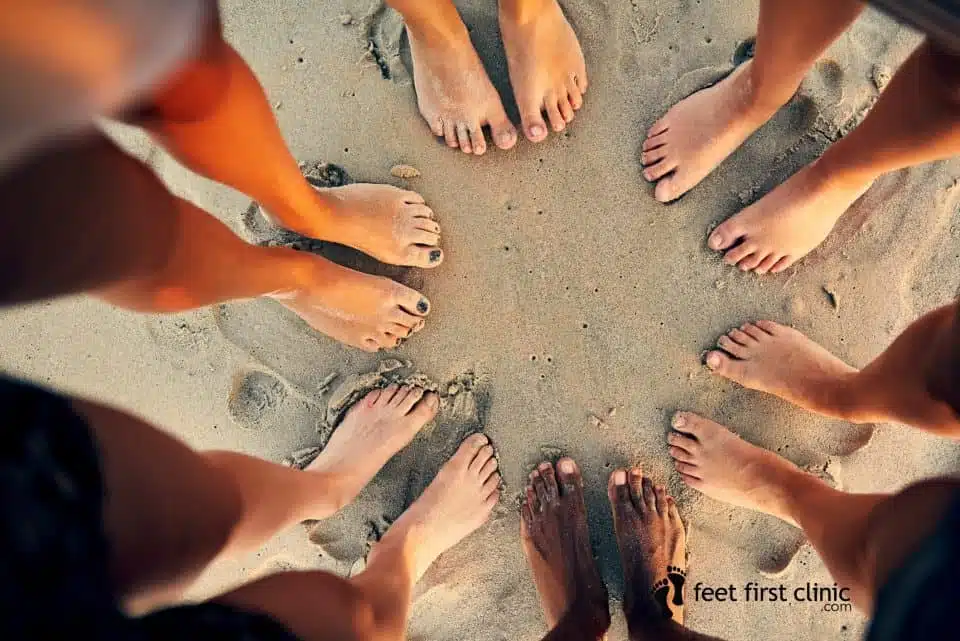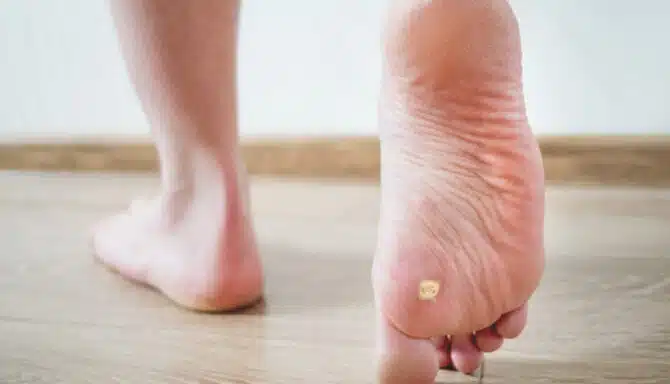When summer hits the city, many people don’t have a care in the world! It’s a time to shed the stress from the long winter and be carefree outside. That said, it’s important to check on your feet as often as you can, as there are a few summer foot problems that can cast a dark cloud on your sunny days.
Below, we’ll discuss the following 6 summer foot problems and how you can treat them:
- Swollen Feet
- Sweaty Feet
- Blisters
- Warts
- Cracked Skin
- Infections
Swollen Feet
Here’s a confusing scenario: it’s time to rock your favourite summer sneakers and sandals, but they don’t fit? While perplexing, there could be a simple cause.
The summer temperatures in Toronto can be pretty sweltering. As a result, your blood vessels dilate when your body attempts to cool itself. This causes a chain reaction that leads to more swelling than you normally experience. While your body attempts to accommodate and move blood back towards your heart, fluids also accumulate, moving downward and trickling into the body’s tissues. This is known as heat edema.
If your swollen feet are due to the blistering heat, there are several things you can do to manage and prevent swelling in the future!
Learn How to Manage Swollen Feet
Sweaty Feet
Having sweaty feet in the summertime is a given, but it’s important to do your best to control it. Not only is it annoying on its own, but sweat and dampness are major contributors to other summer foot problems. These include blisters, fungal infections and persistently itchy skin.
Did you know that a wide array of products exist specifically for sweaty feet? From several types of deodorants to moisture-wicking socks, your solution is out there.
Blisters
Blisters in the summertime are no stranger to most of us. Sweat accumulation can clog the pores in your feet, making them more damp and vulnerable to blisters. Additionally, many people excitedly ditch their socks in the summer. While that’s to be expected with sandals, to avoid blisters, you should still wear socks with sneakers, trainers and runners — even when it’s hot.
Thin, unsupportive flip-flops and walking for long hours in the beautiful weather are also a recipe for blister formation. Supportive sandals are a much better option and come with the breathability and simplicity you’re looking for.
As we’ve mentioned, high-quality footwear is a major way to prevent these painful nuisances. There are also other services and products that can help you walk without blister pain.
Treatment and Prevention For Blisters
Warts
Plantar warts are another common summer foot problem. Summer activities like swimming and hanging out at the beach often involves going barefoot. However, walking barefoot in public places puts our feet at risk of contracting the human papilomavirus (HPV) that causes warts. The highly contagious HPV thrives in our favourite summers spots. Swimming pools (especially the pool deck), public bathrooms at the beach, showers and locker rooms are just a handful of the riskiest areas.
The best way to prevent yourself from getting warts is to wear sandals or water shoes in public places where people often go barefoot. This will keep your feet from coming into contact with the virus. If you do get plantar warts and don’t tend to them, complications like bleeding, severe pain, infection, and difficulties walking can ruin your summer. So be sure to take care of the problem right away!
How to Treat and Prevent Plantar Warts
Cracked Skin
Dry skin isn’t just a winter problem! Your feet can become cracked and dry when it’s hot outside too. Whereas winter dries our feet out with hot water and blasting heat, summer dries out our feet because of how often we expose them.
Thong sandals and flip flops without much coverage leave your feet more susceptible to drying out from walking on the sandy beach and hot pavement. Furthermore, you’re more likely to become dehydrated in the summer and forget to hydrate when you’re out and about. If you don’t drink enough water, the skin can lose moisture and start to dry out.
While there’s not much you can do about the heat and elements, there are many ways you can keep your feet as smooth as possible.
What to Do About Dry Skin and Cracked Heels
Infections
Fungal Infections
The most popular summer spaces are a breeding ground for fungal infections like fungal toenails and athlete’s foot. Fungi like dermatophytes thrive in moist, warm environments and are super easy to contract, targeting our skin and toenails. They can also spread between person-to-person with direct skin contact. Like HPV and plantar warts, these infections are more common in the summer as Torontonians frequent public pools, changing rooms, bathrooms, showers, etc.
Fungal infections can become chronic if you don’t pay serious attention to them. Athlete’s foot and toenail fungus, in particular, are notorious for coming back time and time again. It’s best to treat these nagging infections and do your best to prevent them in the future!
Skin Infections
Skin infections are another common summer foot problem. Our feet are more exposed during the summer from wearing sandals or walking barefoot. That increases the likelihood of cuts and scrapes. And since we don’t cover our feet up in hot weather, open wounds remain exposed, which can lead to skin infections. Not only can an infected wound be irritating, but it can also lead to severe complications if you have diabetes.
Accidents happen, so there’s not too much we can do to prevent cuts and scrapes (save for not walking barefoot on broken glass). So, if you do happen to cut your foot, put a bandage over it until the wound closes up. And if you have diabetes, you should avoid open-toe shoes all together.
How to Keep Your Feet Safe From Infection This Summer


